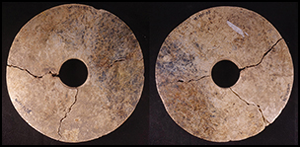Published online by Cambridge University Press: 14 October 2022

Oracle bone inscriptions of the late Shang Dynasty (1250–1046 BC) record the burning of jade as a ceremonial sacrifice, a practice now corroborated archaeologically. The origins of ceremonial jade burning, however, are unclear. Using archaeometric methods and experimental archaeology, the authors examine an assemblage of jade objects from the late Liangzhu-period (2600–2300 BC) cemetery of Sidun. The cause of the jades’ variable surface colours has been long debated. The results presented here demonstrate that the colour changes relate to alterations in chemical composition due to exposure to fire. The evidence from Sidun confirms that the burning of jade in China commenced more than a millennium earlier than previously documented.